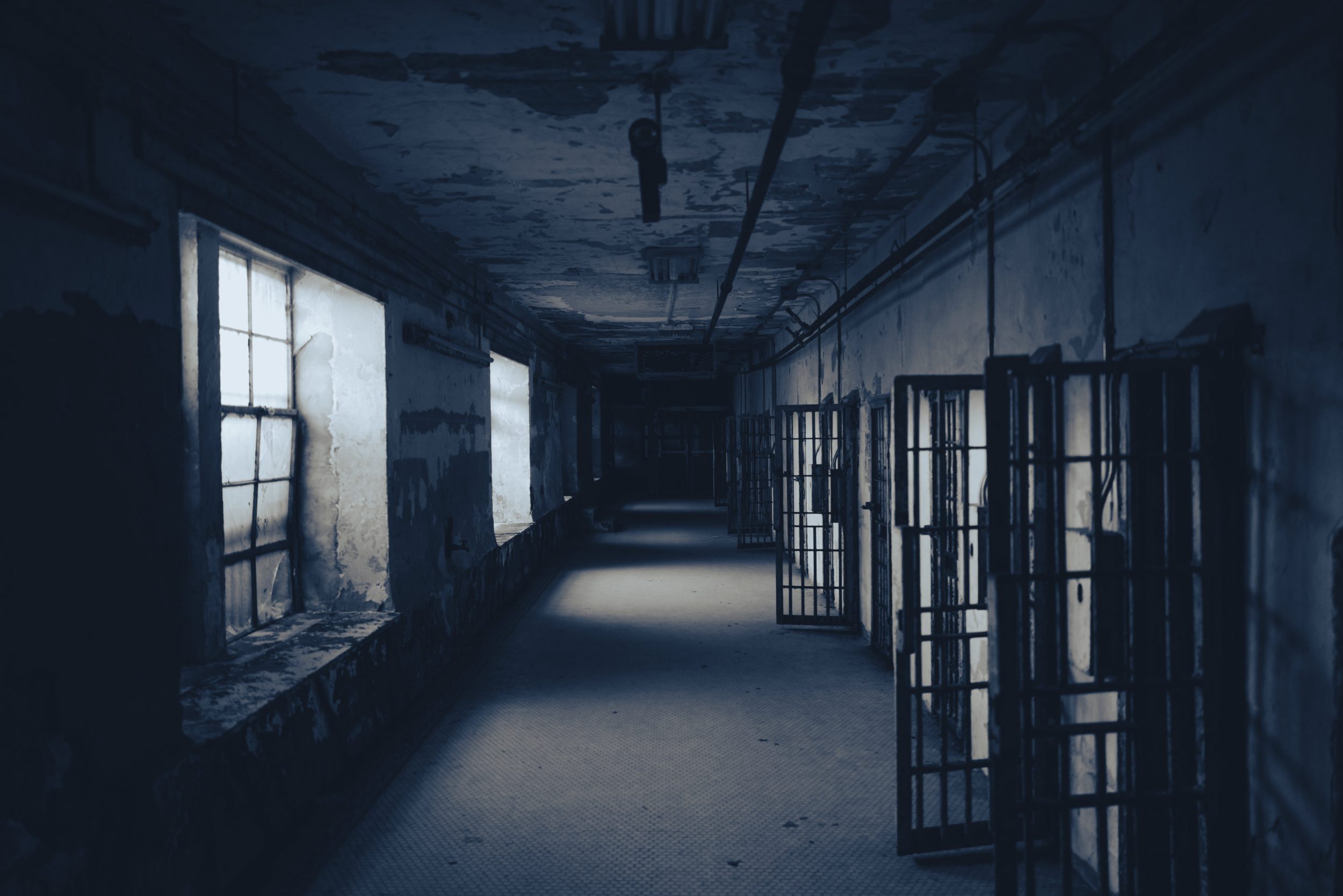In the mid-2010s, disagreements over strategy roiled the anti–death penalty movement. Justice Ruth Bader Ginsburg helmed a liberal wing of the Supreme Court, and Justice Anthony Kennedy—a moderate, relatively speaking—cast the decisive votes in most capital cases. Some in the community believed that the time to press for judicial abolition was nigh, but others thought the approach reckless and premature. The more cautious group emphasized the slowed pace of capital punishment, and they imagined what Hillary Clinton’s strong presidential polling meant for Supreme Court appointments.
The disagreement mattered little. There was no test case. Justice Antonin Scalia died in early 2016. When President Barack Obama tried to appoint Merrick Garland to take Scalia’s seat, Republicans shattered Senate norms and blocked the appointment pending that year’s presidential election. Donald Trump beat Clinton that fall, and he appointed Justice Neil Gorsuch instead. Justice Brett Kavanagh replaced Justice Kennedy (retirement), and Justice Amy Coney Barrett replaced Justice Ginsburg (death). The Court now has six justices with limited interest in death penalty regulation, let alone abolition.
The 2016 election set the movement back a generation. The medium-term possibility of judicial abolition was gone. There were fewer lower-court judges inclined to make effective use of the habeas corpus remedy in capital cases. There was no shot at federal clemency for people on death row. And the federal prison system executed more people in the final six months of the Trump administration than during the previous seventy years combined.
“Loss avoidance” isn’t the cri de coeur the movement imagined, but the movement had to moderate its objectives anyway. People ought not minimize the criminal legal stakes of any presidential election, and there’s a special moral obligation to acknowledge the extraordinary differences between the 2024 candidates. Vice President Kamala Harris opposes the death penalty—more on that below—subject to some reasonable questions about her decision-making as California’s attorney general. Trump, by contrast, boasts unbroken support for the institution, often celebrating even the outermost registers of its crude brutality.
Let’s start with Vice President Harris, whose capital punishment legacy isn’t yet political canon. When she ran for San Francisco district attorney, she pledged that her office wouldn’t seek the death penalty. Early in her DA tenure, the killing of a police officer tested that commitment, but she stuck to her word—permanently damaging the relationship between her office and local police in the process.
Skepticism of Vice President Harris within the anti–death penalty movement centers on a decision she made as the California attorney general. In 2014 a federal district court declared the California death penalty unconstitutional, reasoning that the extraordinary delays between sentencing and execution violated the Eighth Amendment. (I have written extensively about why this liminal period grows.) Harris could have simply allowed the time for seeking an appeal to expire. Instead, she sought further review, the Ninth Circuit reversed the court below, and the California death penalty remains intact. Anger over Harris’s decision persists to this day.
More from our decarceral brainstorm
Every week, Inquest aims to bring you insights from people thinking through and working for a world without mass incarceration.
Sign up for our newsletter for the latest.
Newsletter
During her turn in national government, first in the Senate and then as vice president, Harris has returned to her early career posture, sounding even more like an abolitionist. Running for the 2020 Democratic presidential nomination, she wrote an op-ed promising to end the federal death penalty—calling it “deeply immoral, irreversible, and ineffective.” She applauded California governor Gavin Newsom for using his clemency power to pause California executions. And she was one of the original sponsors of the Senate bill to abolish the federal death penalty.
In contrast, there’s nothing complicated about Trump’s stance on the death penalty. He’s responsible for four-fifths of federal executions since the 1940s, he appointed three pro–death penalty justices to the Supreme Court, he called for the execution of drug dealers, and he once took out a full-page newspaper ad urging the death sentences for five Black teenagers who’d been falsely accused of raping a white woman (the so-called Central Park Five). As I wrote several years ago:
That vice-signaled worldview opposes the virtue-signaled cosmopolitanism and equivocation of death penalty skeptics. In the community that the vice signal helps define and cohere, righteous state killings represent strength and resolve, a clear line separating good and evil, and belief in free will over structural disadvantage. Indeed, that worldview—with its emphasis on public displays of statist strength—is a hallmark of President Trump’s campaigning and political positioning across issues.
His death penalty posture is more than a policy preference; it’s feral identitarianism of the highest order.
Trump’s vice signaling culminated in the ghastly spectacle of thirteen federal executions, all of which took place during the last six months of his administration. Here’s the short version of that period’s story. During the modern capital punishment era—that is, since Furman v. Georgia (1972) invalidated every U.S. death sentence—the federal government had executed only three people. (One was Oklahoma City bomber Timothy McVeigh, in 2003.) Starting in the summer of 2020, however, the federal Bureau of Prisons (BOP) executed thirteen people. Those executions followed a sustained bureaucratic campaign, led by Trump attorneys general Jeff Sessions and Bill Barr, to implement a lawful federal execution protocol, which included the sourcing of drugs for new lethal injection sequences.
When Attorney General Barr disclosed the executions, he styled the administration as the avenger of victims’ families, but the Department of Justice (DOJ) apparently failed to solicit any family input before the announcement. The administration’s commitment to the executions was so extreme that it plowed relentlessly deathward even during the second half of 2020, the lethal height of the early COVID-19 pandemic. Each execution was its own super-spreader event, and the DOJ fought victims’ families who sought to postpone the executions until such a time as they could safely attend. The Trump administration wanted to jam the executions through before Biden’s inauguration, in the face of serious constitutional and statutory issues. The courts ultimately resolved almost none of those legal questions because the executions kept mooting them.
The respective profiles might be summed up this way. Harris opposes the death penalty in her lawmaking and campaigning capacities, and when she views her law enforcement role to include discretion to refuse its application. Trump doesn’t care for institutional nuance and, because its brutal gratuity defines his political brand and binds his supporters to him, he wants as much death penalty as he can get.
What do these profiles mean for each of the U.S. death penalty’s two possible futures? The best way to think about the question is along three dimensions: what they mean for the federal death penalty, for the federal judiciary, and for the “atmosphere” of capital punishment practice writ large.
An administration’s federal death penalty policy subdivides into two pieces: first, its capital prosecution practices; and, second, its approach to the forty incarcerated people currently on federal death row. With respect to the first piece, Vice President Harris would probably discontinue death penalty prosecutions. Recall that she campaigned on such abstention in San Francisco, and then she followed through as the local DA. That approach largely defines her campaign-and-governance record on the national stage too, and she would have the presidential prerogative to set the federal policy. Predicting the second piece is a touch harder, but the uncertainty is within a band. Harris is more anti–death penalty than is President Joe Biden, so she would likely continue his moratorium on federal executions. The predictive uncertainty centers on her willingness to use her clemency power to commute the sentences of those already sitting on federal death row. She’s also operating in a very different political environment than she was in the aftermath of the George Floyd protests; the Democratic Party platform doesn’t include opposition to the death penalty for the first time since 2012.
Trump, by contrast, regularly fantasizes about extravagant capital punishment—as much to build a political brand as anything else. He’d appoint DOJ and BOP leadership committed to aggressive capital prosecutions and accelerated federal executions. A second Trump administration would push the envelope much further than any elected alternative, with respect to both quantity and method, and it wouldn’t self-impose procedural norms that federal courts have been unwilling to enforce as law.
Now consider the stakes for the federal judiciary, which are even higher than most realize. The obvious consequences are the Supreme Court appointments—Vice President Harris would appoint death penalty skeptics with more progressive positions on substantive law and habeas corpus remedies, whereas Trump would appoint justices in the model of Gorsuch, Kavanaugh, and Barrett. The Trumpist appointments would defer the timeline for judicial abolition, make substantive constitutional law less protective of capital defendants, and degrade the post-conviction review that protects against errors and other gross injustice.
The geographically irregular footprint of capital punishment also makes lower court appointments especially consequential. That’s because of where I live: Texas, which is sometimes called the “buckle” of the death belt or the “capital of capital punishment.” After a death sentence becomes final in the state court system, it undergoes federal habeas review, and Texas death sentences move through the U.S. Court of Appeals for the Fifth Circuit. Notwithstanding the fact that Democrats have won three of the last four presidential elections, the Fifth Circuit’s judicial cohort remains a conservative outlier. The circuit’s hard-right lean, combined with Texas’s unique combination of capital sentencing and execution calendaring, accelerates the capital punishment activity in the country’s most active death penalty jurisdiction. A second Trump administration feeds this perfect Texas storm, whereas a batch of lower court Harris appointees represents some possibility of judicial reprieve.
Finally, the presidential election matters to what one might call atmosphere. Institutional change is messy. Movement success is the sum of smaller changes in linked contexts—economic, political, social, and cultural. Leadership’s tone affects all of them. The tone of a Harris administration would jolt movement confidence, shift the Overton window on questions of abolition, prime the public toward skepticism in individual cases, and alter the terms of everyday discourse. The difference is about law, but it’s also about ambition, organizing, and talking. Given its symbolic power, enhanced national skepticism about the death penalty is a crucial brake against the United States’ more general addiction to criminal punishment. A Harris administration’s opposition to the death penalty would fit into a broader critique of the statist violence that constitutes Trumpist governance.
A Trump administration would (obviously) have a very different atmosphere. Precisely because Trump leans so heavily on the death penalty to market his dominance and decisiveness, the atmosphere might be even more important than the policy. Criminal legal reformers of all stripes would be sapped of movement energy, find it harder to sustain discourse with persuadable constituencies, and become bigger targets for hostile state actors eyeing downstream political gain. The law might limit what a second Trump administration could do in court, but it is powerless against Trumpism’s marauding demagoguery.
People intuit that Vice President Harris and former president Trump have different ideas about the death penalty; there’s no news there. But the electorate needs more details about why that difference matters—what it means for the death penalty, for criminal punishment practice more generally, and for civic life in the United States. A Trump administration certainly means more legislative retention, more judges hostile to the constitutional rights of capital defendants, impoverished post-conviction review, more death sentences, and more executions. But a Trump administration would also poison the broader cultural atmosphere with its leader’s Manichean worldview, his spittled vengeance, and the ritualized brutality that marks so many planks of his political project.
Image: Chauncey Huffman/Flickr

